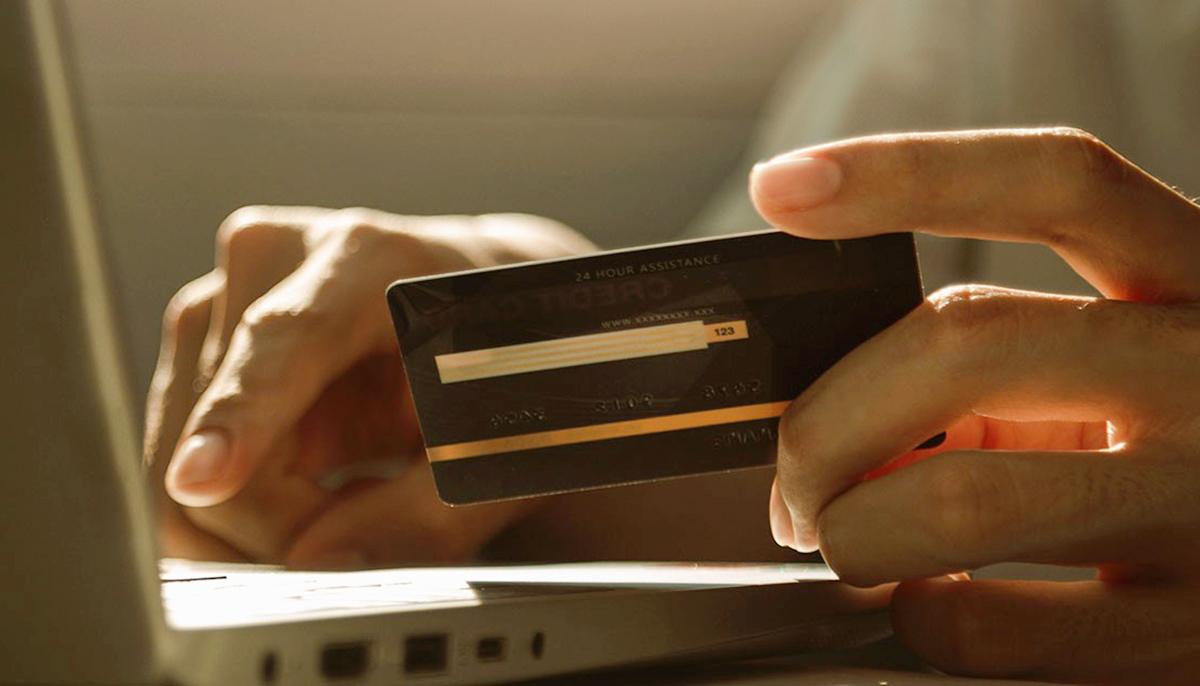

Finance
How To Get A Gap Insurance Refund
Modified: December 30, 2023
Learn how to get a refund on your gap insurance policy and reclaim your finances. Discover the steps to navigate the refund process and save money.
(Many of the links in this article redirect to a specific reviewed product. Your purchase of these products through affiliate links helps to generate commission for LiveWell, at no extra cost. Learn more)
Table of Contents
- Introduction
- Understanding Gap Insurance
- The Need for Gap Insurance Refund
- Exploring Gap Insurance Refund Options
- Method 1: Canceling Gap Insurance within the Cooling-Off Period
- Method 2: Canceling Gap Insurance After the Cooling-Off Period
- Method 3: Transferring Gap Insurance to a New Vehicle
- Method 4: Requesting a Pro-Rata Refund of Gap Insurance
- Conclusion
Introduction
When purchasing a vehicle, one of the important considerations is protecting your investment. While traditional auto insurance covers damages and losses due to accidents, it may not be enough to cover the full cost of a total loss or theft. This is where gap insurance comes into play.
Gap insurance, also known as guaranteed asset protection insurance, helps bridge the gap between the actual cash value of your vehicle and the amount you owe on it. In the event of a total loss, such as a theft or accident, gap insurance ensures that you are not left with outstanding loan payments on a vehicle that no longer exists.
However, there may be instances where you no longer need or want gap insurance, and seeking a refund becomes necessary. Whether you have paid off your vehicle, transferred the loan to a new vehicle, or simply want to explore other insurance options, understanding how to get a gap insurance refund is essential.
Obtaining a gap insurance refund can help you recoup some of the premium you paid for coverage that you no longer require. In this article, we will explore various methods through which you can potentially obtain a gap insurance refund, depending on your specific situation and the terms of your insurance policy.
Understanding Gap Insurance
Gap insurance is designed to protect car owners from financial loss in case of a total loss incident, such as theft or an accident where the vehicle is deemed a write-off. When you purchase a new vehicle, its value begins to depreciate as soon as you drive it off the lot. In some cases, the depreciation can be quite significant, and if your vehicle is stolen or totaled, your standard auto insurance policy might only cover the actual cash value of the car, which could be less than the outstanding loan balance.
This is where gap insurance comes in. Gap insurance covers the difference or the “gap” between what you owe on your auto loan and the actual cash value of your vehicle. It can be particularly beneficial for those who have financed their vehicle with a loan or lease and have little to no equity built up in the car.
For example, let’s say you bought a brand-new car for $30,000 and financed it with a loan. Six months later, the car is stolen, and the insurance company determines its actual cash value to be $25,000. However, you still owe $28,000 on your loan. Without gap insurance, you would be responsible for paying the $3,000 difference out of pocket. With gap insurance, the insurance company would cover that difference.
It’s important to note that gap insurance typically does not cover any deductible you may have on your auto insurance policy. It only covers the difference between the actual cash value and the loan amount.
Gap insurance is typically offered by dealerships or lending institutions at the time of vehicle purchase, but you can also purchase it from an independent insurance company. The cost of gap insurance varies depending on factors such as the value of the vehicle, the loan term, and the coverage limits.
Now that we have a basic understanding of what gap insurance is, let’s explore the need for a gap insurance refund in certain situations.
The Need for Gap Insurance Refund
While gap insurance can provide valuable protection, there are several situations where you may no longer need or want this coverage and may require a gap insurance refund.
One common scenario is when you have paid off your vehicle. If you have successfully paid off your auto loan, the gap insurance coverage is no longer necessary because there is no outstanding loan balance to bridge the gap. In this case, you may want to explore the possibility of obtaining a refund for the remaining unused portion of your gap insurance policy.
Another situation where a gap insurance refund is needed is when you decide to transfer the loan to a new vehicle. If you sell or trade in your current vehicle and finance a new one, you may be able to transfer the existing gap insurance policy to the new vehicle. However, if the terms and conditions of the gap insurance policy do not allow for a transfer or if you decide not to transfer it, you may be eligible for a refund.
Additionally, if you find that the cost of gap insurance is no longer justified or if you have found alternative insurance coverage that better suits your needs, you may want to cancel your existing gap insurance policy and seek a refund.
It’s important to review the terms and conditions of your gap insurance policy to understand your eligibility for a refund. Some policies may have specific refund provisions, such as a cooling-off period or a pro-rata refund option, while others may not offer refunds at all.
Next, we will explore the various methods through which you can potentially obtain a gap insurance refund, depending on your specific situation and the terms outlined in your policy.
Exploring Gap Insurance Refund Options
When it comes to obtaining a refund for your gap insurance, there are a few different options to consider. The specific method available to you will depend on factors such as the terms of your gap insurance policy and the laws and regulations in your jurisdiction.
- Method 1: Canceling Gap Insurance within the Cooling-Off Period: In some cases, your gap insurance policy may have a cooling-off period during which you can cancel the coverage and receive a full refund. The cooling-off period is typically a short window of time after purchasing the policy, during which you can change your mind and cancel the coverage without any penalties. This method is often the easiest way to obtain a gap insurance refund.
- Method 2: Canceling Gap Insurance After the Cooling-Off Period: If you are past the cooling-off period, you may still be eligible for a refund, although it may be prorated. In this method, you would need to contact your insurance provider and formally request the cancellation of your gap insurance policy. The refund amount will depend on the terms outlined in your policy and the amount of time left on the coverage.
- Method 3: Transferring Gap Insurance to a New Vehicle: If you decide to sell or trade in your current vehicle and purchase a new one, you may be able to transfer your existing gap insurance policy to the new vehicle. This option allows you to maintain coverage without needing to obtain a new policy. Keep in mind that there may be certain eligibility requirements and administrative fees associated with transferring the gap insurance.
- Method 4: Requesting a Pro-Rata Refund of Gap Insurance: Some gap insurance policies offer a pro-rata refund option, which means you can receive a partial refund based on the unused portion of your coverage. This method may be applicable if you have already paid your premium in full and decide to cancel the policy before it expires. The refund amount will depend on factors such as the time remaining on the coverage and the terms set forth in your policy.
It’s important to contact your insurance provider directly to inquire about the specific refund options available to you and to understand any potential fees or penalties associated with the refund process. By exploring these gap insurance refund options, you can ensure that you are not paying for coverage that you no longer need or want, and potentially recoup some of the premium you paid for the coverage.
Method 1: Canceling Gap Insurance within the Cooling-Off Period
If you have recently purchased gap insurance and have had a change of heart, you may be able to cancel your policy within the cooling-off period and receive a full refund. The cooling-off period is a specific timeframe, typically a few days to a few weeks, during which you have the right to cancel your gap insurance policy without any penalties or fees.
To take advantage of this method, you should review your gap insurance policy documentation or contact your insurance provider to find out the exact duration of the cooling-off period. It’s crucial to do this as soon as possible to ensure you meet the cancellation deadline.
Once you have confirmed the cooling-off period, there are a few steps to follow to cancel your gap insurance and initiate the refund process:
- Contact your insurance provider: Get in touch with your insurance provider either through phone or email. Explain that you want to cancel your gap insurance policy within the cooling-off period and request a cancellation form or instructions on how to proceed.
- Fill out the cancellation form: If you receive a cancellation form, make sure to read it thoroughly and complete all the necessary fields. Provide accurate and up-to-date information to expedite the cancellation process.
- Submit the cancellation form: Return the completed cancellation form to your insurance provider by the specified deadline. Be sure to follow any instructions regarding submission method, such as sending it via email or certified mail.
- Confirm the cancellation and refund: After submitting the cancellation form, it’s a good idea to follow up with your insurance provider to ensure they received it and to confirm the cancellation of your gap insurance policy. Additionally, inquire about the refund process and the expected timeline for receiving your refund.
It’s important to note that the cooling-off period may vary depending on the insurer and the jurisdiction in which you reside. Therefore, it’s essential to check the terms and conditions of your specific gap insurance policy or consult with your insurance provider directly to determine the exact timeframe during which you are eligible for a full refund.
By canceling your gap insurance within the cooling-off period, you can effectively revoke the coverage and receive a refund of your premium. This method provides a relatively straightforward way to obtain a refund and ensures that you have clarity and peace of mind about your insurance choices.
Method 2: Canceling Gap Insurance After the Cooling-Off Period
If you have missed the cooling-off period to cancel your gap insurance or if your policy does not have a cooling-off period, you may still be able to cancel your coverage and receive a refund. However, keep in mind that the refund process after the cooling-off period may be prorated, meaning you will receive a refund based on the unused portion of your coverage.
To cancel your gap insurance after the cooling-off period, follow these steps:
- Contact your insurance provider: Reach out to your gap insurance provider either through phone or email and inform them of your decision to cancel the coverage. Request the necessary forms or instructions to proceed with the cancellation.
- Review your policy terms and conditions: Carefully review the terms and conditions of your gap insurance policy to determine if there are any specific requirements or penalties for cancellation after the cooling-off period. Take note of any administrative fees that may be associated with the cancellation process.
- Submit the cancellation request: Fill out the cancellation form provided by your insurance provider, ensuring that all required fields are completed accurately. Return the form according to the instructions provided, such as sending it via email or certified mail.
- Confirm the cancellation and refund: It’s advisable to follow up with your insurance provider to confirm the cancellation of your gap insurance policy and inquire about the refund process. Ask about the estimated refund amount and the timeline for receiving your refund.
Keep in mind that the refund amount for canceling gap insurance after the cooling-off period will be prorated, meaning you will only receive a refund for the unused portion of your coverage. The proration is typically calculated based on factors such as the time remaining on the policy and the premium amount paid.
It’s important to note that some insurance providers may charge administrative fees for canceling gap insurance after the cooling-off period. These fees can vary, so be sure to review your policy documents or contact your provider directly to understand any potential charges.
By following the necessary steps and communicating clearly with your insurance provider, you can cancel your gap insurance after the cooling-off period and potentially receive a prorated refund. While the refund may not be the full amount, it can still help you recover some of the premium you have paid for coverage that you no longer require.
Method 3: Transferring Gap Insurance to a New Vehicle
If you decide to sell or trade in your current vehicle and finance a new one, you may have the option to transfer your existing gap insurance policy to the new vehicle. This method allows you to maintain gap insurance coverage without the need to purchase a new policy. However, it’s important to note that not all insurance providers offer this option, and there may be certain eligibility requirements and administrative fees associated with transferring the coverage.
To explore the possibility of transferring your gap insurance to a new vehicle, follow these steps:
- Contact your gap insurance provider: Get in touch with your insurance provider and inquire about the process and requirements for transferring your existing gap insurance policy. Provide them with the details of your new vehicle, such as the make, model, and VIN.
- Review the terms and conditions: Carefully review the terms and conditions of your gap insurance policy to ensure that it allows for a transfer to a new vehicle. Take note of any eligibility requirements or restrictions, such as the age or value of the new vehicle.
- Provide necessary information: If your insurance provider confirms that the transfer is possible, they will likely request specific information about the new vehicle, such as proof of ownership, loan or lease details, and documentation to support the value of the vehicle.
- Pay any applicable fees: Depending on the terms of your gap insurance policy, there may be administrative fees associated with transferring the coverage to the new vehicle. Make sure to clarify and pay any required fees to complete the transfer process.
- Obtain confirmation and documentation: Once the transfer is approved, make sure to obtain written confirmation from your insurance provider. This documentation will serve as proof of coverage for the new vehicle and should be kept for your records.
By transferring your existing gap insurance policy to a new vehicle, you can maintain the coverage without the need to purchase a separate policy. However, keep in mind that the terms and conditions of the transferred coverage may differ slightly from the original policy, so it’s important to review the documentation thoroughly.
If transferring the gap insurance policy is not possible or if you choose not to transfer it, you may still be eligible for a refund of the remaining premium. In such cases, you can explore other refund methods, such as canceling the coverage or requesting a pro-rata refund based on the remaining time left on the policy.
Remember to contact your insurance provider to discuss the specific details and requirements for transferring your gap insurance coverage to a new vehicle. They will guide you through the process and provide any necessary forms or documentation needed to complete the transfer smoothly.
Method 4: Requesting a Pro-Rata Refund of Gap Insurance
In some cases, you may have already paid for your gap insurance in full but find that you no longer need the coverage before the policy expires. If your gap insurance policy offers a pro-rata refund option, you may be eligible to request a partial refund based on the unused portion of your coverage. This method allows you to recoup a percentage of the premium you paid for the remaining time on your policy.
Follow these steps to request a pro-rata refund of your gap insurance:
- Contact your insurance provider: Get in touch with your gap insurance provider and inform them of your decision to cancel the coverage before it expires. Request information on the pro-rata refund process and any required documentation.
- Gather necessary documents: In order to process your pro-rata refund request, your insurance provider may need certain documents, such as proof of cancellation, proof of the remaining term on the policy, and a copy of your original payment documentation. Make sure to provide all the required documentation to facilitate the refund process.
- Submit the refund request: Fill out any refund request forms provided by your insurance provider, ensuring that all required information is accurately provided. Return the completed forms along with any required documents to initiate the refund process.
- Confirm the refund amount and timeline: It’s advisable to follow up with your insurance provider to confirm the refund amount and the expected timeline for receiving your refund. This allows you to have clarity about the amount you can expect to receive and when it will be issued to you.
It’s important to note that the pro-rata refund amount will depend on factors such as the remaining time on the policy and the premium amount paid. The insurance provider will calculate the refund based on the unused portion of the coverage you have already paid for.
Keep in mind that some insurance providers may charge administrative fees for processing the pro-rata refund. These fees can vary, so it’s important to review the terms and conditions of your gap insurance policy or contact your provider directly to understand any potential fees.
By requesting a pro-rata refund of your gap insurance, you can recoup a portion of your premium and ensure that you are only paying for the coverage you use. This method allows you to optimize your insurance expenses while still benefiting from the protection provided by the coverage for the time it was in effect.
Conclusion
Obtaining a gap insurance refund is a valuable option for those who no longer need gap coverage or have found alternative insurance solutions. Understanding the various methods available to obtain a refund can help you navigate the process smoothly and recoup some of the premium you have paid.
During the initial stages of purchasing a vehicle, it’s crucial to consider the need for gap insurance and evaluate its value in bridging the gap between the actual cash value and your outstanding loan balance. However, as your circumstances change, you may find that gap insurance is no longer necessary or suitable for your needs.
If you decide to cancel your gap insurance, the cooling-off period provides an excellent opportunity to receive a full refund. However, if you miss the cooling-off period or have already paid for your coverage in full, you may still have options. The possibilities include canceling the coverage and requesting a pro-rata refund or exploring the option of transferring the gap insurance to a new vehicle.
It’s essential to review the terms and conditions of your gap insurance policy and contact your insurance provider directly to understand your eligibility for a refund and the specific requirements and procedures involved in the refund process.
Remember that each insurance provider may have different policies and procedures regarding gap insurance refunds. Therefore, it is crucial to communicate with your insurance provider and follow their guidelines to ensure a smooth and efficient refund process.
In conclusion, understanding how to obtain a gap insurance refund can help you make informed decisions about your insurance coverage and ensure that you are only paying for the protection you need. By exploring the available options and following the necessary steps, you can potentially receive a refund and adjust your insurance coverage accordingly.














